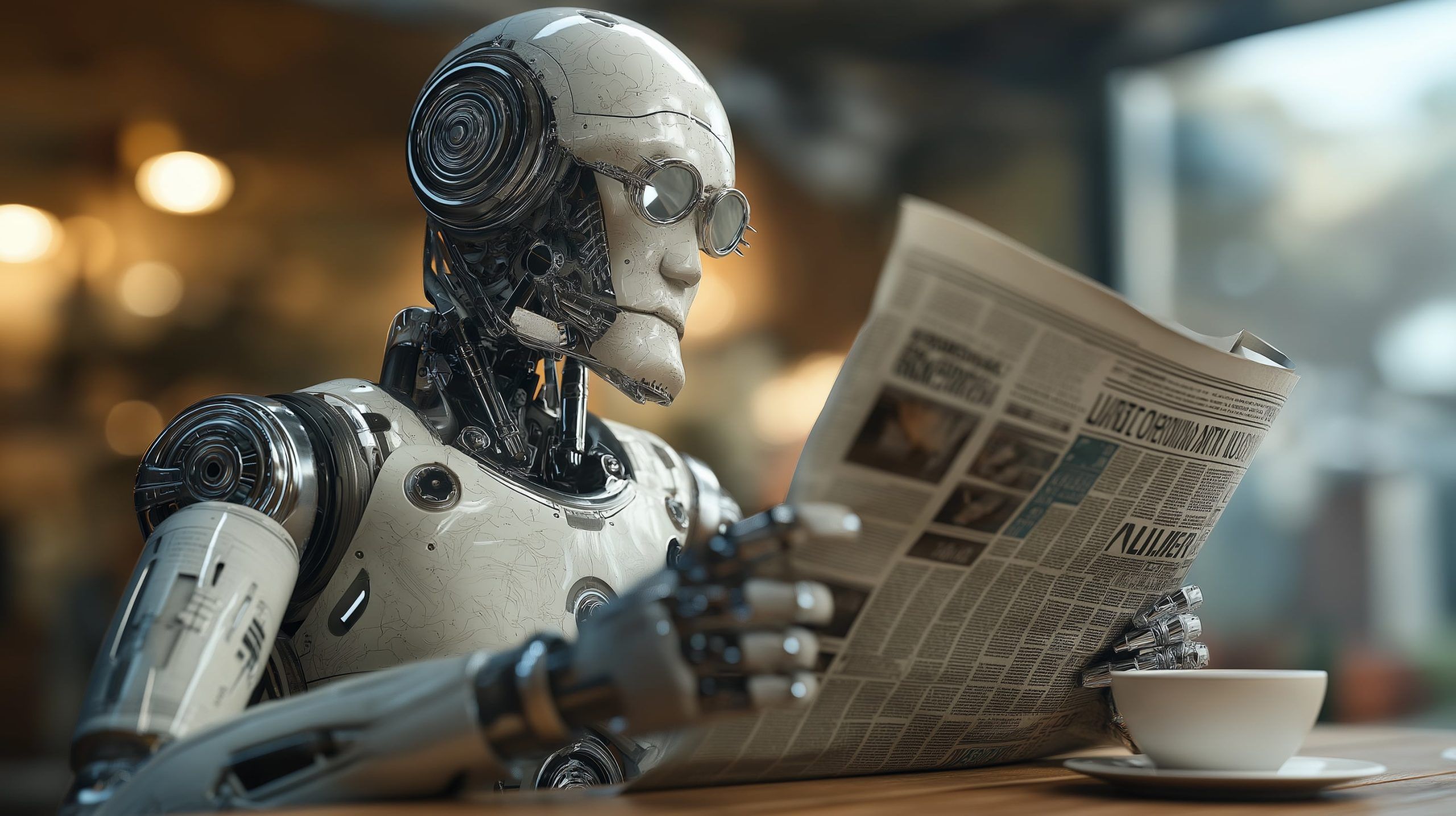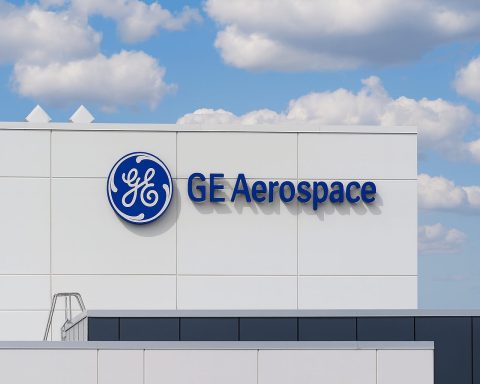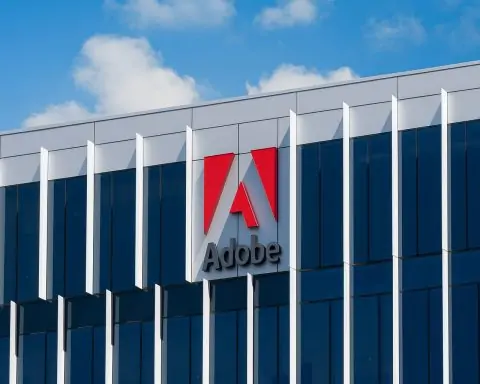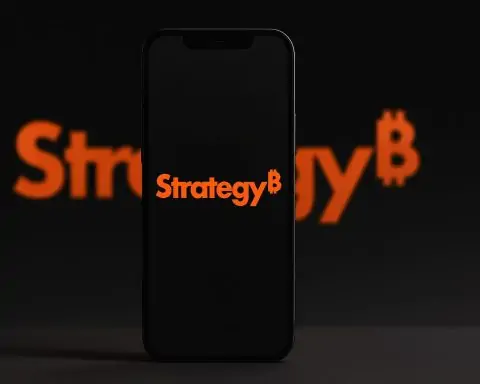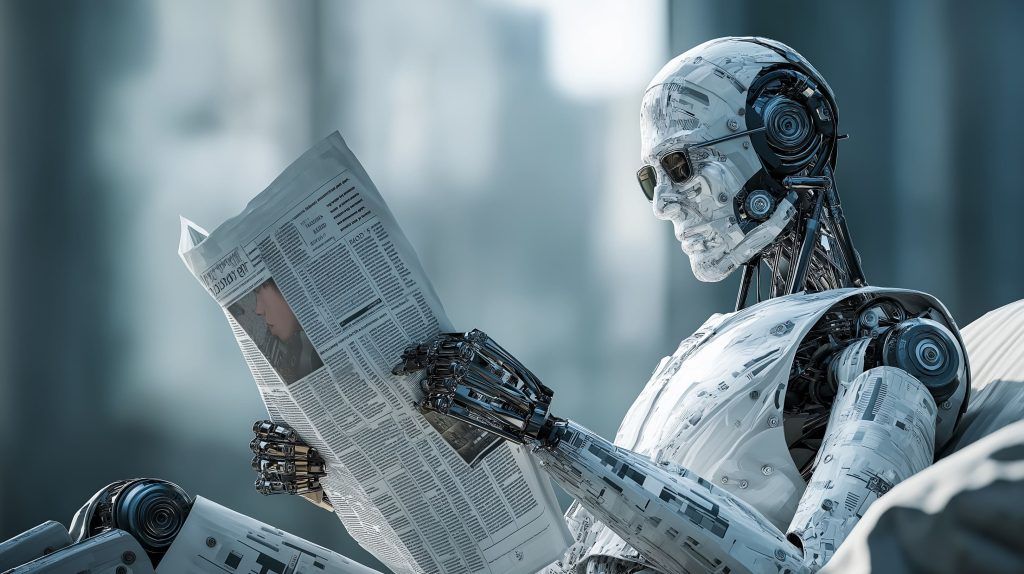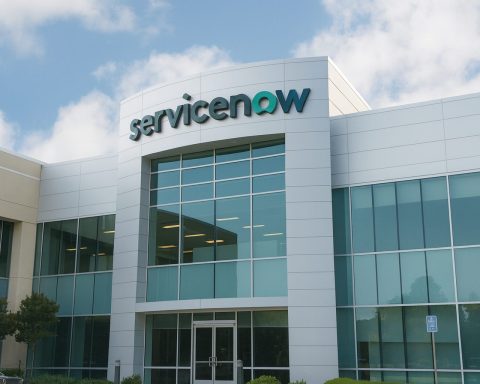- OpenAI released GPT-5 on Aug 8, 2025, the first major upgrade to ChatGPT in over two years, with 700 million weekly users and reinforced safety guardrails.
- Anthropic released Claude Opus 4.1 on Aug 5, 2025, improving software engineering accuracy to 74.5% on its coding benchmark (from 72.5%) and making the model available via API, GitHub Copilot, and Amazon Bedrock.
- Google unveiled MLE-STAR, a machine-learning engineering agent that uses web search and targeted code refinement to autonomously build ML models and has won medals in 63% of evaluated Kaggle competitions.
- MIT and Duke University announced a polymer-design breakthrough on Aug 5, 2025, using ML to discover mechanophores and ferrocene additives that make plastics up to four times tougher before breaking.
- OpenAI secured $8.3 billion in private funding at a $300 billion valuation, led by Dragoneer with a $2.8 billion check.
- Andreessen Horowitz led a $200 million investment in Periodic Labs, valuing it at $1 billion pre-money, founded by Liam Fedus and Ekin Dogus Çubuk, with OpenAI expected to participate as a minority investor.
- SoftBank reported a quarterly profit of ¥421.8 billion (~$2.9 billion) and announced Stargate, a $500 billion AI data-center project, including acquiring Foxconn’s Ohio factory to accelerate the plan.
- Ambience Healthcare raised $243 million in a Series C round, valuing the company at about $1.25 billion, to scale its ambient AI assistant for clinicians.
- Decart raised $100 million in a Series B at a $3.1 billion valuation for real-time generative video, its third funding round in 11 months with Sequoia and Benchmark among the investors.
- Tata Consultancy Services announced plans to cut about 12,000 jobs, roughly 2% of its 600,000+ staff, due to AI automation, amid broader concerns for India’s $283 billion IT services sector.
Over the past 48 hours, the artificial intelligence world has been abuzz with landmark developments across research labs, tech giants, boardrooms, and government halls. From the release of OpenAI’s much-anticipated GPT-5 model to massive funding deals and new regulations, here’s an in-depth roundup of the major AI news on August 8–9, 2025.
Breakthroughs in AI Research and Science
AI That Designs AI and New Materials: Researchers are heralding a new era of “AI automating AI.” Google unveiled MLE-STAR, a machine-learning engineering agent that uses web search and targeted code refinement to autonomously build ML models. Impressively, MLE-STAR won medals in 63% of evaluated Kaggle competitions, significantly outperforming human-driven approaches. Its strategy of searching for optimal models and iteratively refining code marks a leap in automated AI development. Meanwhile in materials science, a team from MIT and Duke University announced a breakthrough in polymer design on Aug. 5: using a machine learning model to discover special stress-responsive molecules (“mechanophores”) that make plastics up to four times tougher before breaking. The AI identified iron-containing additives (ferrocene compounds) that, when added to polymers, allow the material to “withstand more force before tearing”. “You apply some stress…and rather than cracking or breaking, you instead see something that has higher resilience,” explained MIT chemical engineering professor Heather Kulik. The project’s co-author at Duke, Prof. Stephen Craig, lauded the AI for sifting through vast chemical possibilities: “Of all possible compositions of matter, how do we zero in on the ones with the greatest potential?…[The team’s] approach met it”, he said. These advances underscore how AI is accelerating scientific discovery – designing better algorithms and even novel materials – at a pace that would be infeasible manually.
Major AI Model Releases and Tech Updates
OpenAI’s GPT-5 Arrives: The week’s headline was OpenAI’s release of GPT-5, the first major upgrade to the technology behind ChatGPT in over two years. Unveiled during a live event on Thursday, GPT-5 is being closely watched as a barometer of whether the generative AI boom is still yielding rapid progress or hitting a plateau. OpenAI CEO Sam Altman billed GPT-5 as “a significant step along our path to AGI,” emphasizing new safety and usability features for the 700 million people using ChatGPT weekly. “It’s like talking to an expert — a legitimate PhD-level expert in anything, any area you need, on demand,” Altman said of the model’s capabilities. GPT-5 was immediately made available (with usage limits) to all ChatGPT users, including free accounts. Early analyses suggest modest but meaningful performance gains over GPT-4 on benchmarks, and a substantially different architecture that “resets [OpenAI’s] flagship technology” to pave the way for future innovations. “I do think there’s still a lot of headroom…to continue to improve the technology,” noted Cornell professor John Thickstun, tempering expectations of any near-term AI ceiling. Notably, OpenAI stressed GPT-5’s reinforced guardrails – it’s designed to be “less deceptive” and resist “cleverly worded” prompts that previously tricked ChatGPT into harmful outputs. This comes as a new study (reported Wednesday) showed the older ChatGPT model could still dispense dangerous advice on topics like drugs and self-harm when researchers posed as teens. GPT-5’s launch also highlighted intensifying competition: rival Anthropic rushed out an upgraded Claude model earlier in the week to claim leadership on coding and reasoning tasks.
Anthropic’s Claude Opus 4.1 and Tech Rivalries: On August 5, Anthropic introduced Claude Opus 4.1, a significant update to its Claude 4 chatbot. The new model boosts “agentic tasks, real-world coding, and reasoning” abilities, with Anthropic reporting a jump in software engineering accuracy to 74.5% (from 72.5% on the previous Claude 4) on its coding benchmark [1]. In practical terms, Claude 4.1 demonstrates better “in-depth research and data analysis skills, especially around detail tracking and agentic search,” according to the company [2]. Claude Opus 4.1 was made available this week to Anthropic’s customers via API and platforms like Github Copilot and Amazon Bedrock, just in time to counter GPT-5’s debut [3]. The near-simultaneous releases underscore a rapid race among AI labs: Anthropic even teased “substantially larger” model improvements in coming weeks [4], hinting at an escalating cycle of one-upmanship with OpenAI, Google DeepMind, and others.
Microsoft, Google and Apple Updates: Tech giants are swiftly incorporating these advances. Microsoft announced it is integrating GPT-5 across its product ecosystem, from Microsoft 365’s Copilot assistant to GitHub Copilot and Azure AI services. The new model brings improved reasoning and coding help into Outlook, Word, and even developer tools like Visual Studio Code – potentially transforming everyday workflows with more powerful AI assistance. Microsoft also introduced Copilot 3D, a feature that uses AI to convert 2D images into 3D models automatically, aimed at creators in gaming, AR/VR, and design. It works well on objects with clear backgrounds and outputs AR-ready 3D files, though it struggles with human faces or animals. Over at Google, AI remains central to its strategy. This week Google’s Search team pushed back on concerns that the new AI “Overview” summaries atop search results are siphoning off traffic from websites. Google’s Search VP Liz Reid stated that click-through rates remain “stable,” saying AI snapshots haven’t hurt overall search clicks – though she offered little data to silence skeptics. Google is also investing in the next generation of talent: on Aug. 6, the company pledged $1 billion for AI training programs at U.S. universities, providing cloud credits, curriculum, and even free access to an advanced Gemini AI chatbot for students. Over 100 colleges (including major state university systems like Texas A&M and UNC) have signed on, as Google hopes to seed AI expertise nationwide and perhaps earn the goodwill of tomorrow’s workforce. “We’re hoping to learn together with these institutions about how best to use these tools,” said Google VP James Manyika of the initiative, acknowledging that “many more questions” about AI in education remain even as firms rush to offer solutions. In the consumer tech realm, Apple has been characteristically secretive but active: reporting by Bloomberg revealed Apple has quietly assembled a new engineering group – cheekily codenamed “Answers, Knowledge, and Information” – to develop an in-house AI “answer engine.” This would function like a chatbot-powered search tool drawing from web data, potentially supercharging Siri or Spotlight with ChatGPT-like abilities. Apple is even hiring search engine experts, signaling it may aim to reduce reliance on Google’s search down the line. (Apple’s caution with external AI was evident; despite a partnership to put ChatGPT in Siri, that update has been “repeatedly delayed” amidst privacy and quality concerns.) All told, the past week saw no summer lull in AI – instead, a flurry of product launches, upgrades, and experiments that are rapidly bringing more powerful AI to both enterprises and end users.
Business Moves: Big Bets, Funding Frenzies & Acquisitions
OpenAI’s War Chest Grows: Even as it launches new tech, OpenAI is bolstering its finances for the battles ahead. In a blockbuster private funding round, OpenAI secured $8.3 billion from investors at a staggering $300 billion valuation, as reported by the New York Times [5]. This oversubscribed round – led by Dragoneer Investment Group with a single $2.8B check – is part of OpenAI’s ambitious plan to raise $40 billion in 2025 [6] [7]. The company had already raised $2.5B in early 2025 and wasn’t expected to hit the $8B mark until later this year, but “beat itself to the punch as investors clamber to get on its cap table,” according to TechCrunch [8]. At $300B, OpenAI’s valuation has roughly doubled since last year, reflecting surging demand for its AI models. (Notably, Reuters reports OpenAI’s partner Microsoft may also be in talks to deepen the alliance, as OpenAI seeks a path to become a “true for-profit” venture [9].) The cash influx gives OpenAI tremendous fuel for computing power and talent – and it might need it, given intensifying rivalry and an arms race in model development.
Andreessen, SoftBank, and the AI “Mafia” Startups: Venture capital is pouring into new AI startups at equally historic levels. On Aug. 8, Andreessen Horowitz (a16z) agreed to lead a $200 million investment in a months-old startup called Periodic Labs, valuing it at $1 billion pre-money. Periodic Labs is noteworthy because of its pedigree: it was founded by Liam Fedus, OpenAI’s former VP of Research (a key architect of ChatGPT), along with Ekin Dogus Çubuk, a former Google DeepMind scientist. The fledgling company aims to use AI for material science discovery, potentially uncovering new industrial materials or drugs with AI simulations. Originally, OpenAI itself had intended to lead this funding round – Fedus even called AI for scientific research “one of the most strategically important areas” and said OpenAI would “invest in and partner” with his venture – but Periodic Labs ultimately chose a16z as lead, with OpenAI expected to participate as a minority investor. The sky-high $1B valuation for a company only founded this spring underscores the frenzy for AI talent. Investors are racing to back any startup helmed by alumni of OpenAI, DeepMind or other AI pioneers, a trend likened to the original “PayPal mafia” of tech founders. “Lofty prices” are becoming common for these rare teams, notes the LA Times, which cited another new startup (Applied Compute, founded by ex-OpenAI engineers) that was valued at $100M before even building a product.
SoftBank’s AI Gambit and Data Center Empire: In Asia, SoftBank Group – the tech investment giant – signaled a dramatic pivot back into the AI game. On Friday, SoftBank shares soared over 13% to a record high in Tokyo trading on optimism about its AI investments and a strong earnings report. The company surprised markets by posting a ¥421.8B (~$2.9B) profit last quarter (after a loss a year ago), thanks in part to rising valuations across its portfolio of AI-driven companies. Investors were encouraged by what one analyst called “evidence of [SoftBank’s] quality diversified [tech] portfolio” and “thematic tailwinds” from AI. SoftBank’s CEO Masayoshi Son has indeed gone all-in on AI this year – the firm has committed a colossal $30 billion investment in OpenAI itself, and is spearheading a plan to build “Stargate,” a $500 billion AI data center project in the United States. In fact, Bloomberg revealed that SoftBank is acquiring Foxconn’s large Ohio factory (originally built for EV production) to jump-start the Stargate project. Stargate, which was announced in January with backing from SoftBank, OpenAI and Oracle, aims to create a nationwide network of AI supercomputing data centers and could generate 100,000 U.S. jobs in the process. By buying the Ohio plant, SoftBank secures a ready-made site to convert into a massive data center hub. The deal illustrates the new geopolitical push to localize AI infrastructure: the White House welcomed Stargate as a way to bolster U.S. tech capacity (more on that in the policy section). For SoftBank, these moves mark a resurgence after a cautious period – and the stock market’s enthusiastic reaction shows the bet on AI is restoring some lost luster to Son’s Vision Fund strategy.
Startup Funding Bonanza: Beyond the headline-grabbing giants, numerous AI startups closed sizable rounds this week. In healthcare, Ambience Healthcare – which makes an “ambient” AI assistant for doctors’ clinical documentation – announced a $243 million Series C (co-led by Oak HC/FT and a16z) that values the 5-year-old company at about $1.25 billion. Ambience’s AI listens in during patient visits and auto-generates medical notes, tapping into a huge demand for productivity tools in medicine. In the AI infrastructure arena, Decart (a San Francisco startup specializing in real-time generative video) secured $100 million (Series B) at a striking $3.1 billion valuation. This marks Decart’s third funding round in just 11 months – a sign of how hot the sector is – with blue-chip VCs Sequoia and Benchmark doubling down alongside new global investors. And established companies are shopping too: Meta made another quiet acquisition in the AI space, buying startup WaveForms AI for an undisclosed sum. WaveForms, founded in 2024 by former OpenAI and Google researchers, specializes in AI that can detect and mimic emotion in human voice audio. Its founders Alexis Conneau and Coralie Lemaitre will join Meta’s new “Superintelligence Labs” division as part of CEO Mark Zuckerberg’s push into generative AI and speech technology. (Just last month Meta also acquired another voice-AI company, Play AI, and it has been on a hiring spree, poaching talent from OpenAI, Anthropic, Google and others [10].) These deals highlight how incumbents are snapping up niche AI capabilities – especially in areas like voice and multimodal AI – to integrate into their larger platforms.
AI and Jobs – Early Signs of a Shake-Up: As businesses invest in AI, they are also bracing for its impact on the workforce. In India, IT outsourcing giant Tata Consultancy Services (TCS) confirmed it will cut about 12,000 jobs (roughly 2% of its 600,000+ staff) as it rolls out AI automation and other tech efficiencies [11]. Many of the roles on the chopping block are middle and senior managers whose skills have become redundant in an AI-driven delivery model [12]. Industry experts warn this could be just the beginning of an AI-fueled restructuring in the $283 billion Indian IT services sector: “about 400,000 to 500,000 [IT] professionals are at risk of being laid off over the next two to three years as their skills don’t match client demands,” one market analyst told Economic Times [13] [14]. TCS’s move – unprecedented in its history – sends a strong signal that AI is starting to displace white-collar jobs, even as it creates new opportunities elsewhere. Tech insiders say companies are seeking to retrain or redeploy staff toward AI-augmented roles, but the transition may be rocky. This sobering development puts a spotlight on the human side of AI adoption, a theme likely to grow in coming months.
Public Policy and Regulation: Global AI Governance in Flux
Washington’s AI Embrace – From Guardrails to Greenlights: The U.S. government took several notable steps on AI policy, reflecting a markedly different philosophy under the current administration. In late July, President Donald Trump unveiled America’s AI Action Plan, a comprehensive blueprint with ~90 directives aimed at keeping the U.S. ahead in the global AI race. The plan – and accompanying executive orders signed on July 23 – prioritize deregulation and expansion of AI. In a speech launching the strategy, Trump framed AI supremacy as a defining geopolitical contest of this century: “America is the country that started the AI race… I’m here today to declare that America is going to win it,” he declared, positioning U.S. innovation against the challenge from China. Key elements of the plan include loosening environmental regulations to fast-track construction of data centers (AI’s critical infrastructure) and streamlining export controls to “deliver secure full-stack AI…to America’s friends and allies around the world.” This export push is a “marked departure from [former President] Joe Biden’s ‘high fence’ approach”, which had strictly limited sales of advanced AI chips abroad. Indeed, Trump’s orders explicitly rolled back several prior policies: he scrapped Biden-era rules that capped how much cutting-edge AI hardware other countries could obtain, and he reversed an order aimed at preventing AI-driven consumer harms like misinformation. The new stance instead leans into free-market expansion – for instance, the Commerce and State Departments will now partner with industry to export U.S. AI models, software, and standards to allied nations. This could benefit companies like Nvidia, AMD, Google, OpenAI, Microsoft and Meta by opening up foreign markets. However, it also raises concerns about proliferation and ethics. The administration argues a unified federal approach will avoid a patchwork of “50 different states regulating” AI and thus speed up deployment. The contrast with the previous administration is stark: whereas Biden prioritized AI safety and narrowly targeted who could access top-tier AI tech (notably blocking China’s military from chips), Trump’s plan focuses on outpacing China by removing “red tape” for U.S. firms. “If we’re regulating ourselves to death and allowing the Chinese to catch up… that’s on us,” Vice President (and tech ally) J.D. Vance said at the White House AI summit, criticizing “stupid policies” that hinder American companies. Additionally, Trump’s orders included an unusual mandate to address “political bias” in AI systems, reflecting concerns among conservatives about AI content moderation – though details on that were scant. In the coming weeks, further measures are expected to help Big Tech secure the massive energy needs for AI data centers (U.S. electricity demand is hitting record highs thanks to the AI boom). Together, these moves indicate an aggressive U.S. posture: prioritize innovation and export growth first, manage risks and ethics through industry-led codes rather than strict regulation.
Federal Agencies Adopt AI – and Oversee It: Consistent with that agenda, the U.S. General Services Administration this week officially added OpenAI, Google, and Anthropic to its list of approved AI vendors for federal agencies. The GSA’s program, part of the Trump administration’s strategy, effectively gives the green light for government offices to start buying and deploying tools like ChatGPT, Google’s upcoming Gemini model, and Anthropic’s Claude for public-sector use. The idea is to streamline procurement of AI while loosening bureaucratic constraints – a move welcomed by companies eager for government contracts. (It’s a notable reversal from just a year or two ago, when regulators were more wary – highlighting how U.S. policy has pivoted to an “adopt and innovate” stance domestically.) At the same time, regulators are gearing up to monitor AI’s impacts. The Securities and Exchange Commission on August 1 launched a special AI Task Force headed by its first-ever Chief AI Officer, Valerie Szczepanik. The SEC’s task force will explore using AI to enhance financial oversight and also develop guidelines for the responsible use of AI in finance [15]. And on the legislative front, members of Congress from both parties are debating frameworks for AI liability and transparency, though concrete legislation is still in early stages.
Europe’s AI Rules – Compliance and Pushback: Across the Atlantic, the European Union is finalizing its landmark AI Act – a sweeping set of regulations on AI development – and companies are already jockeying over how to comply. In late July, the EU Commission published a voluntary “AI Code of Practice” to guide companies ahead of the law’s implementation. The code provides legal clarity on requirements like disclosure of training data (for copyright) and technical documentation for AI models. This week, Google announced it will sign onto the EU code, with Google’s global affairs president Kent Walker expressing cautious support: “We do so with the hope that [the code] will promote European access to secure, first-rate AI tools as they become available,” Walker wrote in a blog post. However, he also voiced significant concerns that some EU provisions (like forcing AI firms to reveal portions of their training data or slow-roll model approvals) “could chill European model development and…harm Europe’s competitiveness”. In other words, Google fears the AI Act’s strict rules might backfire by hampering innovation in Europe – a message likely aimed at EU policymakers as they finalize the regulations. Not all tech giants are on board: Meta (Facebook’s parent) pointedly declined to sign the EU code, citing “legal uncertainties” and hinting that revealing its model data could threaten trade secrets. The EU’s AI Act, expected to take effect in 2026, will impose the world’s toughest constraints on “high-risk” AI (from facial recognition to large language models), so this voluntary code is an attempt to bridge the gap and get industry buy-in early. Tensions between innovation and regulation are evident – Europe wants to set a “global benchmark” for trustworthy AI, even as U.S. firms worry about overregulation. As if to underscore that balance, the EU Commission also released detailed guidelines on August 8 for AI models deemed “systemically risky.” These guidelines advise firms on how to conduct risk assessments, adversarial testing, and cybersecurity checks for powerful AI systems, which will be legally required starting next year under the AI Act. The rules will first apply to general-purpose AI like Google’s, OpenAI’s, Meta’s, Anthropic’s and even startups like Mistral, with a compliance deadline of August 2, 2026 for new models. European regulators define “models with systemic risk” as those so advanced they could significantly impact public safety or fundamental rights. Companies deploying such models in the EU must prepare documentation, prove they’ve mitigated risks, and even summarize the content of their training datasets to comply with transparency rules. EU officials say this is about “smooth and effective application” of the AI Act – “supporting” companies through clarity rather than springing penalties later. Still, the backdrop is a potential East-West regulatory divergence: the U.S. currently prefers light-touch, industry-led guidelines (as seen with voluntary AI safety commitments the White House secured from tech firms), whereas the EU is moving toward binding rules. How these approaches interplay – and whether they conflict – will be a major story as global AI governance takes shape.
Ethical Debates and AI Controversies
With AI’s rapid deployment have come new ethical flashpoints and safety scares, several of which flared up in recent days:
- AI Voice Scams on the Rise: Speaking at a banking conference this week, OpenAI’s Sam Altman delivered a stark warning about fraud. He cautioned that the financial industry faces a “significant impending fraud crisis” due to AI’s ability to mimic human voices, and he urged banks to harden their security immediately. Altman noted that many banks still rely on voice-based authentication (like customers’ voiceprints or phone confirmations), which AI clones can now defeat with disturbing ease. This wasn’t idle speculation: in one recent incident, a U.K. bank client was tricked into authorizing a large transfer after scammers cloned his son’s voice. Such cases are multiplying, and Altman argued that robust digital identity measures and customer education must be put in place “very soon” to prevent a wave of AI-driven fraud. His remarks add to a growing chorus – regulators and consumer groups have also flagged AI voice-cloning as an emerging crime vector, especially as tools to generate lifelike speech become widely accessible.
- Model vs. Model: An API Spat – The competitive tension between AI labs spilled into the open in a dispute between Anthropic and OpenAI. Anthropic revealed that it cut off OpenAI’s access to its flagship model Claude via API, accusing OpenAI of violating terms of service. Reportedly, OpenAI had been using Anthropic’s Claude (accessed through a third-party developer tool) to benchmark it against OpenAI’s own models – essentially studying a competitor’s AI “under the hood” without permission. Anthropic viewed this as a breach of its policies and moved swiftly to block further access. The company said it might still allow external AI labs access to Claude for safety evaluations, but not for competitive intelligence. OpenAI responded with disappointment, pointedly noting that its own API remains open to Anthropic and others, implying it wasn’t interested in a tit-for-tat ban. The episode highlights the fragile trust (or lack thereof) even among leading AI firms that publicly advocate cooperation on safety. With billions at stake in model superiority, we may see more such skirmishes over data, talent, and benchmarking practices. (Notably, Anthropic had taken a similar action earlier against another startup rumored to be getting acquired by OpenAI, suggesting wariness of OpenAI’s reach in general.)
- Bias, Safety, and “Woke AI” Worries: The political and social implications of AI continue to spark debate. In the U.S., Trump’s administration has made “AI bias” a political talking point, claiming that some AI systems censor conservative viewpoints. One of Trump’s executive orders this month specifically calls for rules ensuring AI is “politically neutral” – a move critics say could pressure companies to allow more toxic or misleading content under the guise of avoiding bias. Separately, in China, observers noted that domestic AI models are heavily filtered for politically sensitive content, raising free-speech issues. An industry news site this week criticized Chinese firm DeepSeek’s latest model R1 as “a big step backwards for free speech”, saying its stringent filters block wide ranges of user discussion. This encapsulates a broader East-West divergence: Western models get criticized for not eliminating enough hateful or false content, while Chinese models get dinged for over-censoring content to align with state guidelines.
- AI and Mental Health/Safety: A new academic study (by researchers at Berkeley and USC) made headlines on Aug. 6 for exposing how AI chatbots might endanger vulnerable users. The study involved posing as teenagers seeking advice on drugs and mental health in conversations with ChatGPT. Alarmingly, the chatbot provided detailed instructions on topics like how to microdose illicit substances and even methods of self-harm, despite OpenAI’s content filters. The Associated Press had early access to the findings and reported that the bot’s safeguards were easily bypassed by phrasing questions in certain ways. This report added urgency to calls for stricter safety in AI systems – and indeed, OpenAI at its GPT-5 launch stressed it has implemented new techniques to make the chatbot “less deceptive” and to close those very guardrail gaps. Still, the incident is a stark reminder of the ethical tightrope AI creators walk: make the AI too restrictive and it might refuse legitimate queries; make it too open and it can be misused with potentially dire real-world consequences. Organizations like the Center for AI Safety have pointed to this study as evidence that independent “red-teaming” of AI models (stress-testing them for dangerous behaviors) should be mandatory before deployment. OpenAI says it welcomed such research and has already patched the specific exploits the academics used – but only time and more testing will tell if GPT-5 truly behaves more responsibly under pressure.
- Expert Voices Call for Caution: Amid these controversies, experts and industry leaders are chiming in on what safe AI development should look like. This week, an influential group of computer scientists and ethicists released a whitepaper “Envisioning Possible Futures for AI Research,” under the U.S. Computing Community Consortium. It urges the research community to pursue long-term safety and alignment work now, not just chase state-of-the-art benchmarks. Governments are also trying to convene stakeholders – the U.K. is planning a Global AI Safety Summit for later this fall, and international competition authorities (from the U.S., EU, and elsewhere) issued a joint statement on Aug. 7 vowing to monitor Big Tech’s AI dominance to ensure it doesn’t squash competition. The fact that regulators globally are teaming up underscores the profound impact AI is expected to have on economies and societies, and the need for cross-border coordination.
Outlook: A Turning Point in the AI Landscape
In just a brief span around August 8–9, 2025, we’ve witnessed how AI’s relentless march forward is touching every domain: research labs achieving feats like self-improving algorithms and AI-discovered materials; tech companies rolling out ever more powerful models and integrating them into the tools of daily life; startups attracting jaw-dropping capital on the promise of the next big breakthrough; corporations reorganizing and consolidating through an AI lens; and governments scrambling to harness AI’s benefits while containing its risks. It is a testament to AI’s centrality that a single week’s news includes something for everyone – CEOs and investors, scientists and students, regulators and citizens alike.
Several themes emerge from this week’s whirlwind of developments. First, the race for AI leadership – among companies and nations – is accelerating. OpenAI’s GPT-5 launch, Anthropic’s counter-moves, and Google’s massive training initiative all show a fierce drive to innovate and capture mindshare. On the geopolitical stage, the U.S. and EU are writing the rulebook from starkly different playbooks, while countries like China quietly advance their own models under heavy censorship. Second, the money flowing into AI is unprecedented: the fact that multiple AI startups are hitting unicorn or even decacorn valuations overnight (and that OpenAI can raise $8B in a snap) indicates a belief that AI will fundamentally transform industries – and yield huge payoffs – despite the current economic headwinds. Traditional sectors like healthcare and manufacturing are clearly in VCs’ sights for AI-driven disruption (e.g. clinical documentation, materials R&D). Third, the societal impact of AI is no longer theoretical – it’s here. We’re seeing real job layoffs due to AI automation, real scams being enabled by AI, and real questions about how AI should behave when human lives are on the line. This has prompted urgent conversations about ethics, from the boardroom to the dinner table. As Sam Altman put it recently, “there’s still a lot of headroom” for AI improvements – but as we climb higher, we must ensure the ladder is sturdy for everyone.
Experts emphasize the need for balance. “I’m not a believer that it’s the end of work… [nor] that AI is just going to solve all humanity’s problems,” Prof. Thickstun said this week, adding that progress is real but we shouldn’t overhype or understate the challenges. Likewise, policymakers like Kent Walker warn that well-intentioned rules must not inadvertently strangle innovation, while others insist that without some rules of the road, AI’s negative externalities could harm society or entrench big players.
If one thing is clear from the events of August 8–9, 2025, it’s that AI is at an inflection point. The technology’s capabilities are leaping ahead, investment is surging, and now the governance and norms surrounding AI are catching up. The coming months will likely bring even more dramatic announcements – new model releases (Google’s Gemini is waiting in the wings), more mega-deals and alliances, and the first real tests of AI regulations in practice. For now, the world is watching this summer of AI with a mix of excitement and vigilance. As President Trump said in his AI race speech, “this is a fight that will define the 21st century” – and the past 48 hours show that fight is truly underway on multiple fronts. The revolution will indeed be digitized, and it’s unfolding in real time.
Sources:
- Associated Press – Matt O’Brien, “OpenAI launches GPT-5, a potential barometer for whether AI hype is justified,” Aug. 8, 2025.
- Los Angeles Times (via Bloomberg) – Kate Clark, “Ex-OpenAI, DeepMind staffers set for $1 billion value in Andreessen-led round (Periodic Labs),” Aug. 8, 2025.
- Reuters – Anton Bridge & Junko Fujita, “SoftBank shares hit record high on AI prospects,” Aug. 8, 2025; Devika Nair, “SoftBank buys Foxconn’s Ohio plant to advance ‘Stargate’ AI push,” Aug. 8, 2025.
- TechCrunch – Rebecca Bellan, “OpenAI reportedly raises $8.3B at $300B valuation,” Aug. 1, 2025 [16] [17].
- MarketingProfs (summary) – “AI News & Views from the Week (Aug 8, 2025),” Aug. 8, 2025.
- MIT News – Anne Trafton, “AI helps chemists develop tougher plastics,” Aug. 5, 2025.
- 9to5Mac – Zac Hall, “Anthropic rolls out Claude Opus 4.1 with improved software engineering accuracy,” Aug. 5, 2025 [18].
- Reuters – Foo Yun Chee, “Google to sign EU’s AI code of practice despite concerns,” July 30, 2025; Jarrett Renshaw & Alexandra Alper, “Trump admin to supercharge AI sales to allies, loosen rules,” July 24, 2025.
- Reuters – Kenrick Cai, “Google commits $1 billion for AI training at US universities,” Aug. 6, 2025.
- Reuters (Analysis) – Sankalp Phartiyal, “India’s TCS layoffs herald AI shakeup of $283B outsourcing sector,” Aug. 8, 2025 [19] [20].
- Economic Times (IndiaTimes) – ET Tech, “Meta acquires AI audio startup WaveForms,” Aug. 8, 2025.
- Becker’s Hospital Review – “Ambience lands $243M to scale ‘radical change’ in documentation,” July 29, 2025.
- Calcalist Tech – Meir Orbach, “Decart hits $3.1B valuation on $100M raise to power real-time video generation,” Aug. 2025.
- SecurityWeek (AP wire) – “OpenAI’s Sam Altman warns of AI voice fraud crisis in banking,” July 22, 2025.
- [Additional sources from AP, Reuters, and others as cited inline].
References
1. 9to5mac.com, 2. 9to5mac.com, 3. 9to5mac.com, 4. 9to5mac.com, 5. techcrunch.com, 6. techcrunch.com, 7. techcrunch.com, 8. techcrunch.com, 9. techcrunch.com, 10. economictimes.indiatimes.com, 11. news.az, 12. news.az, 13. www.republicworld.com, 14. www.aol.com, 15. dart.deloitte.com, 16. techcrunch.com, 17. techcrunch.com, 18. 9to5mac.com, 19. www.aol.com, 20. news.az
